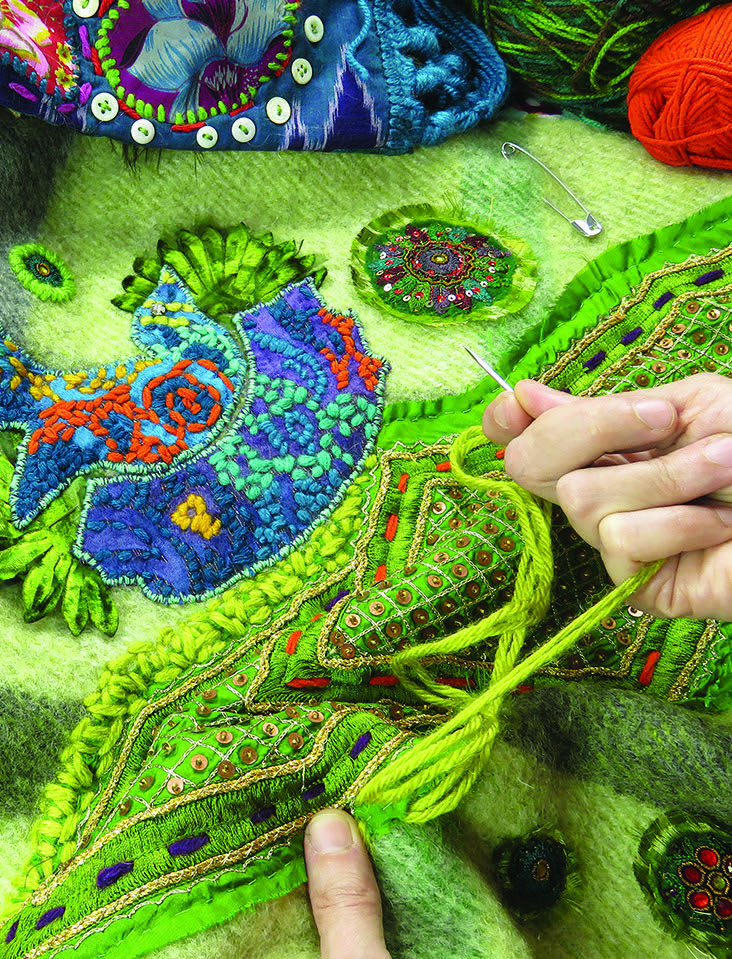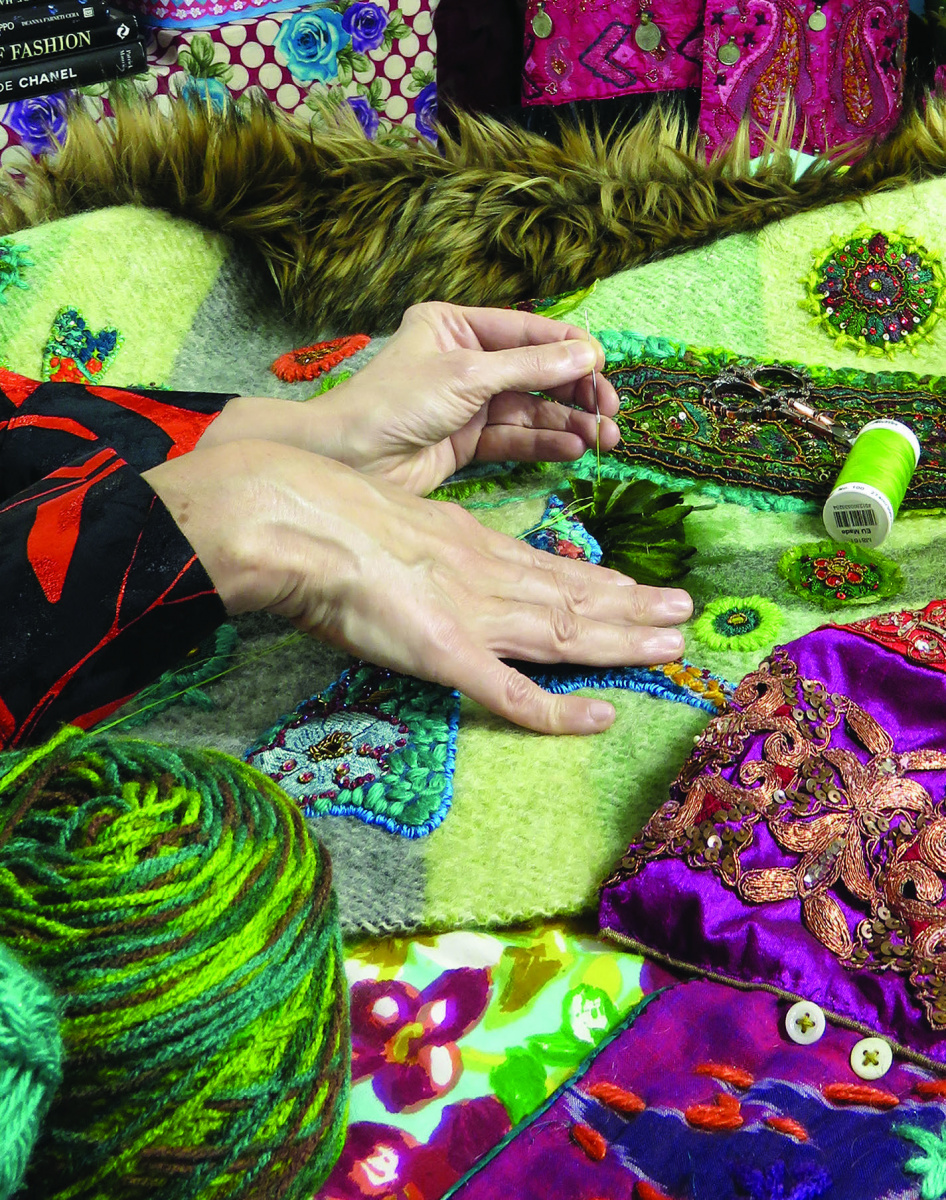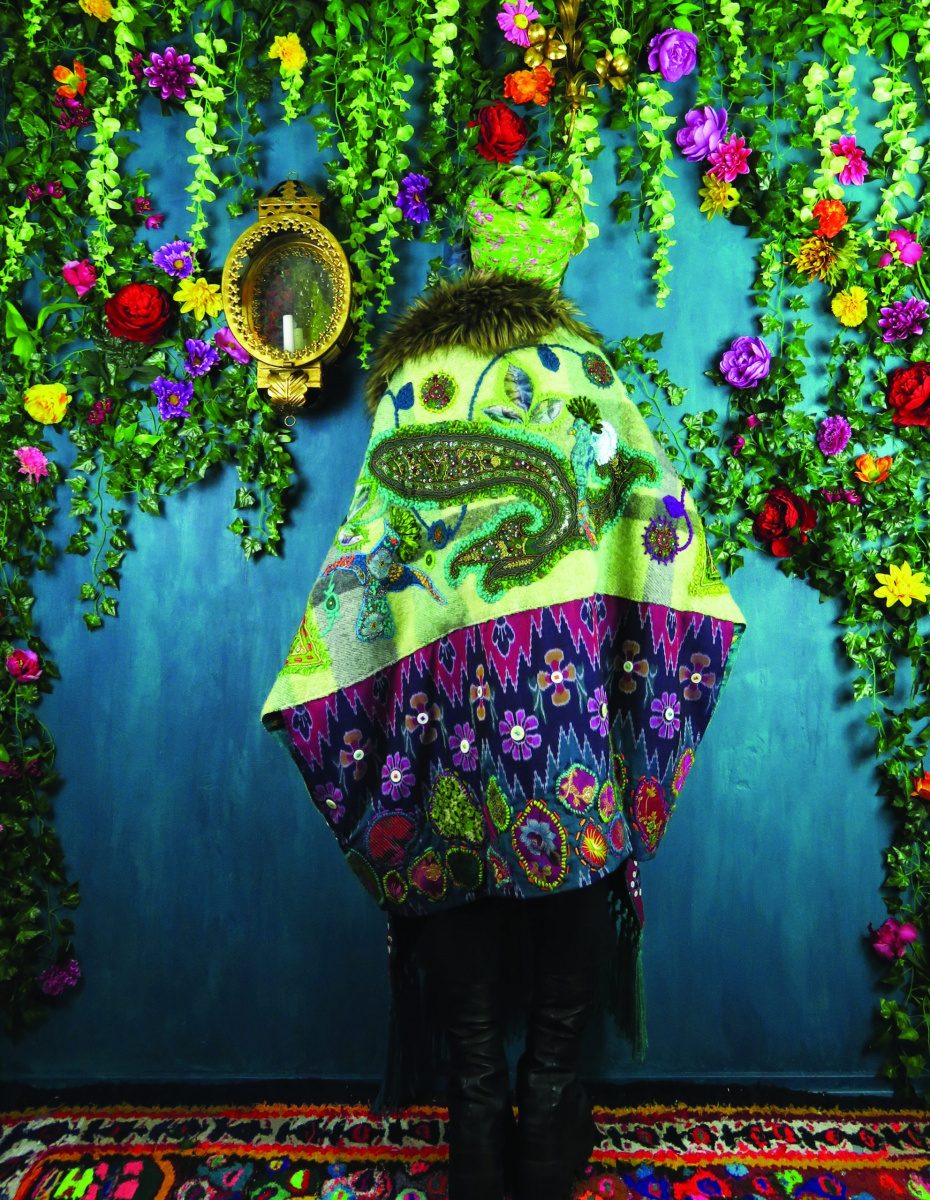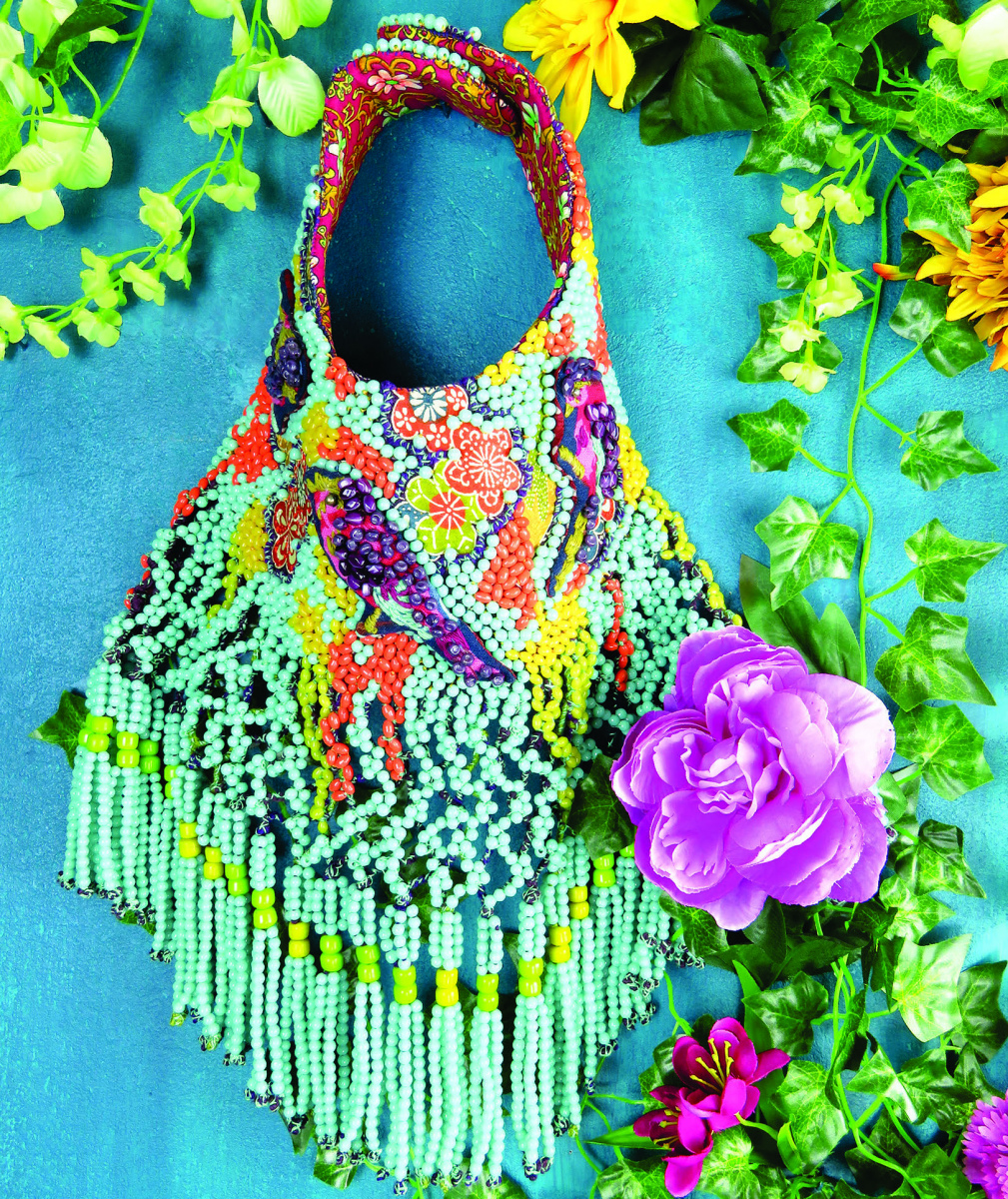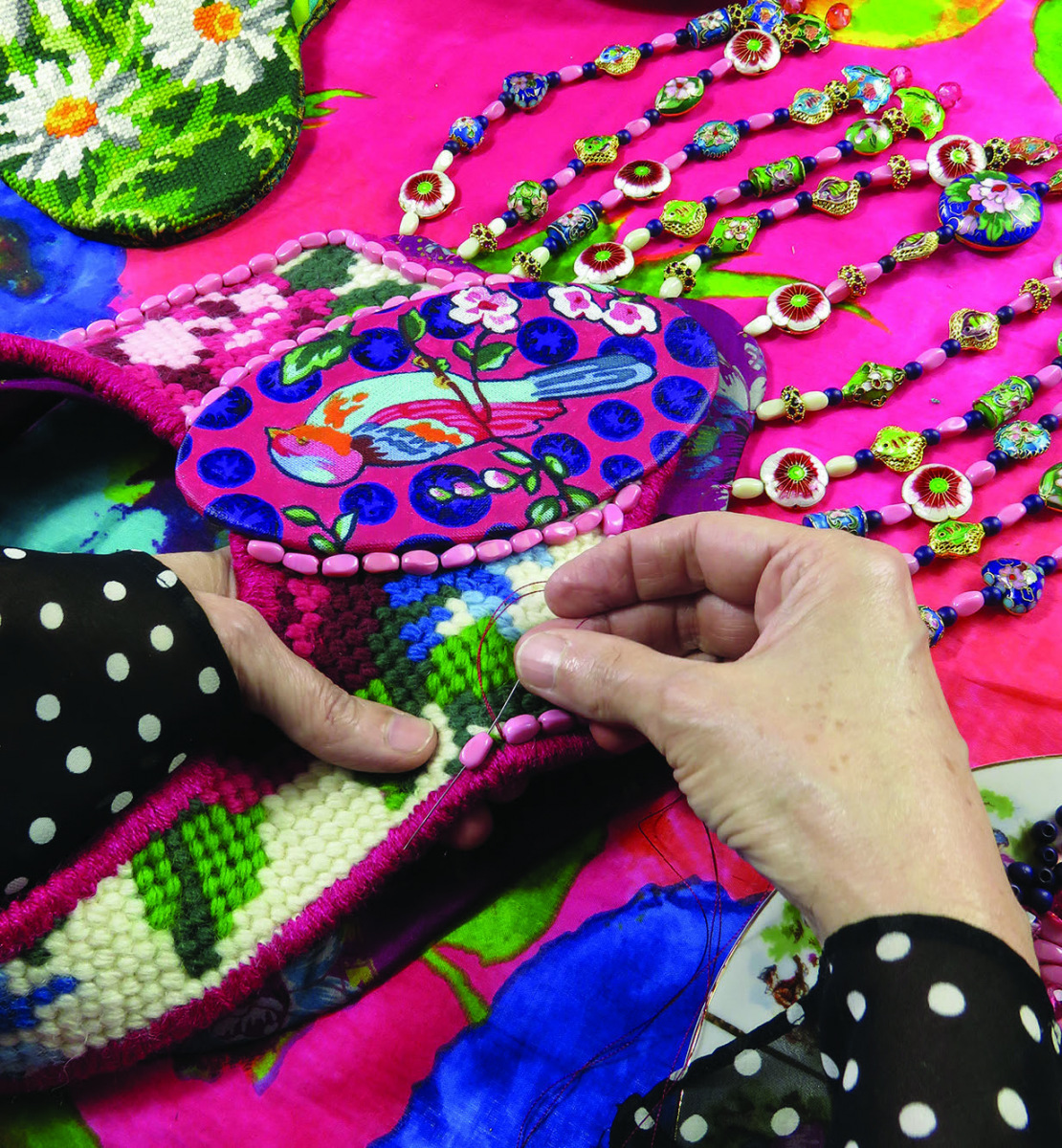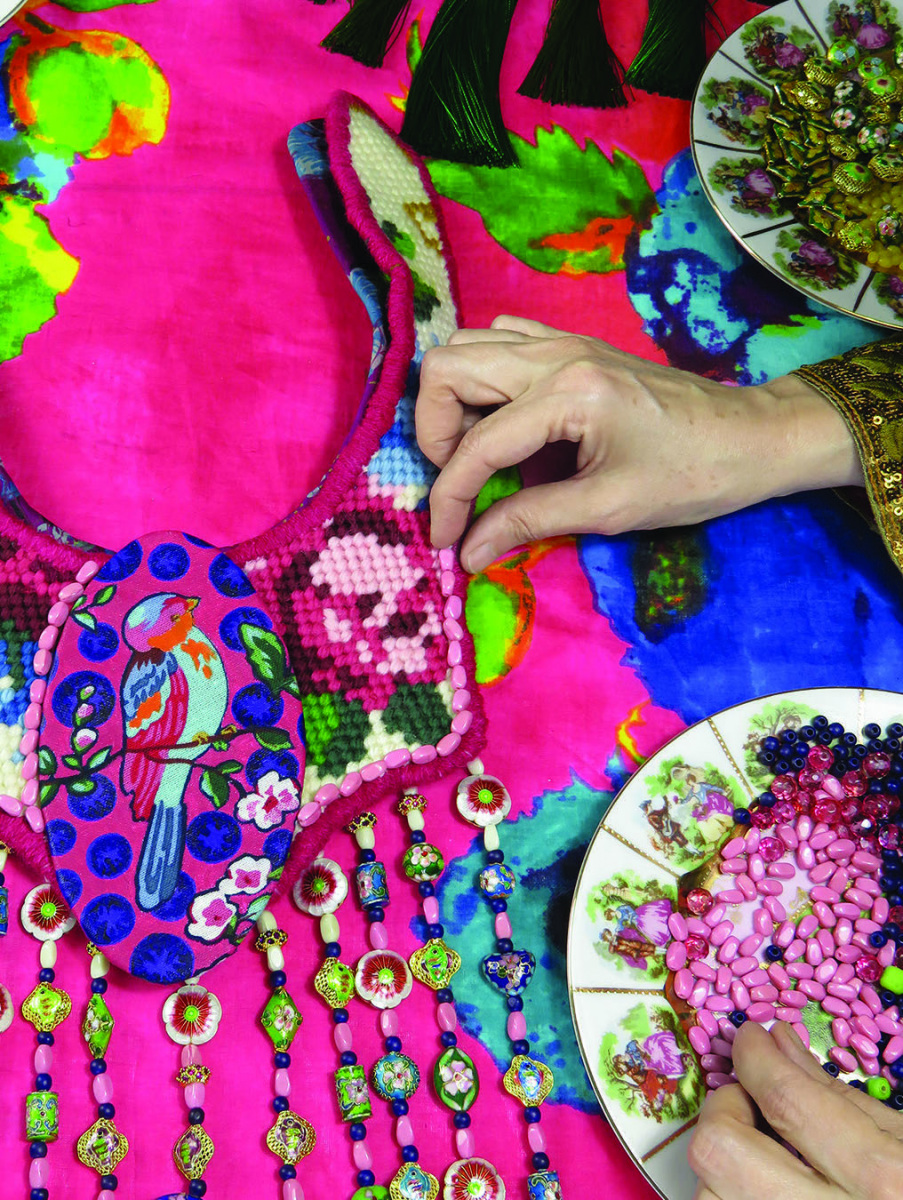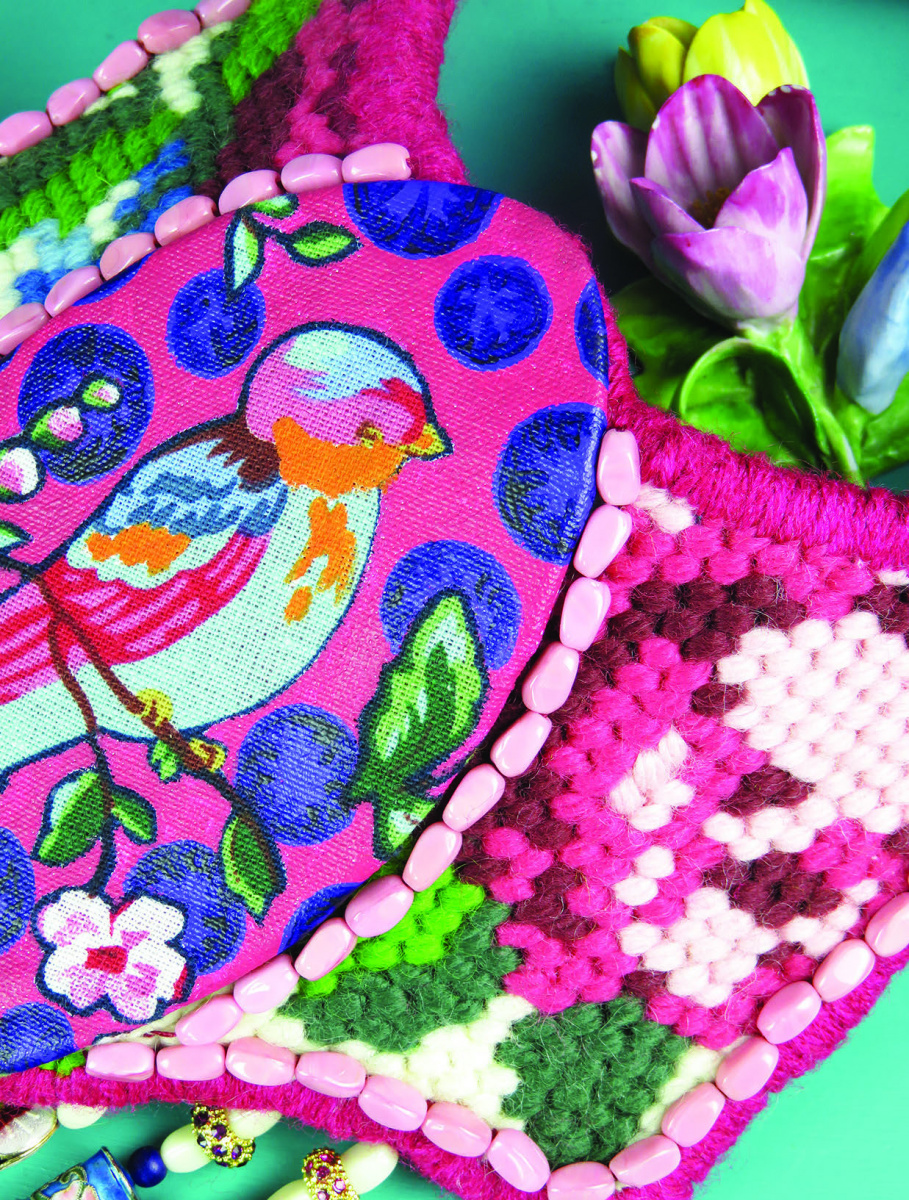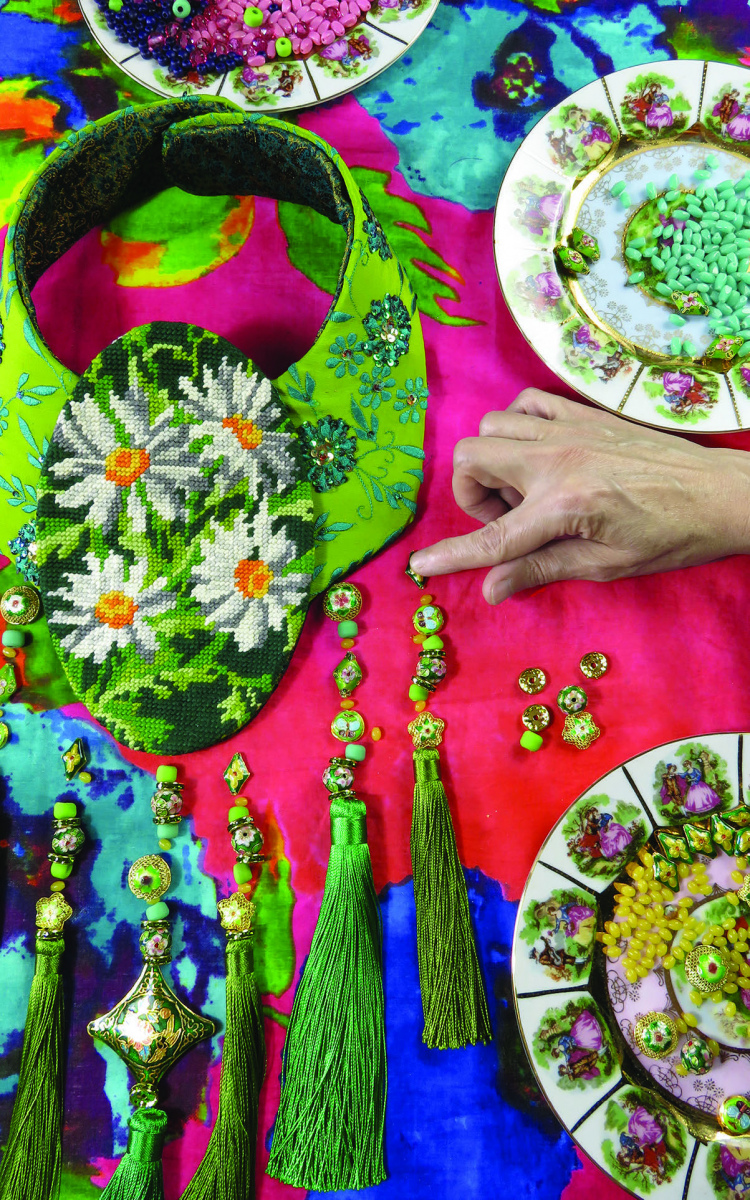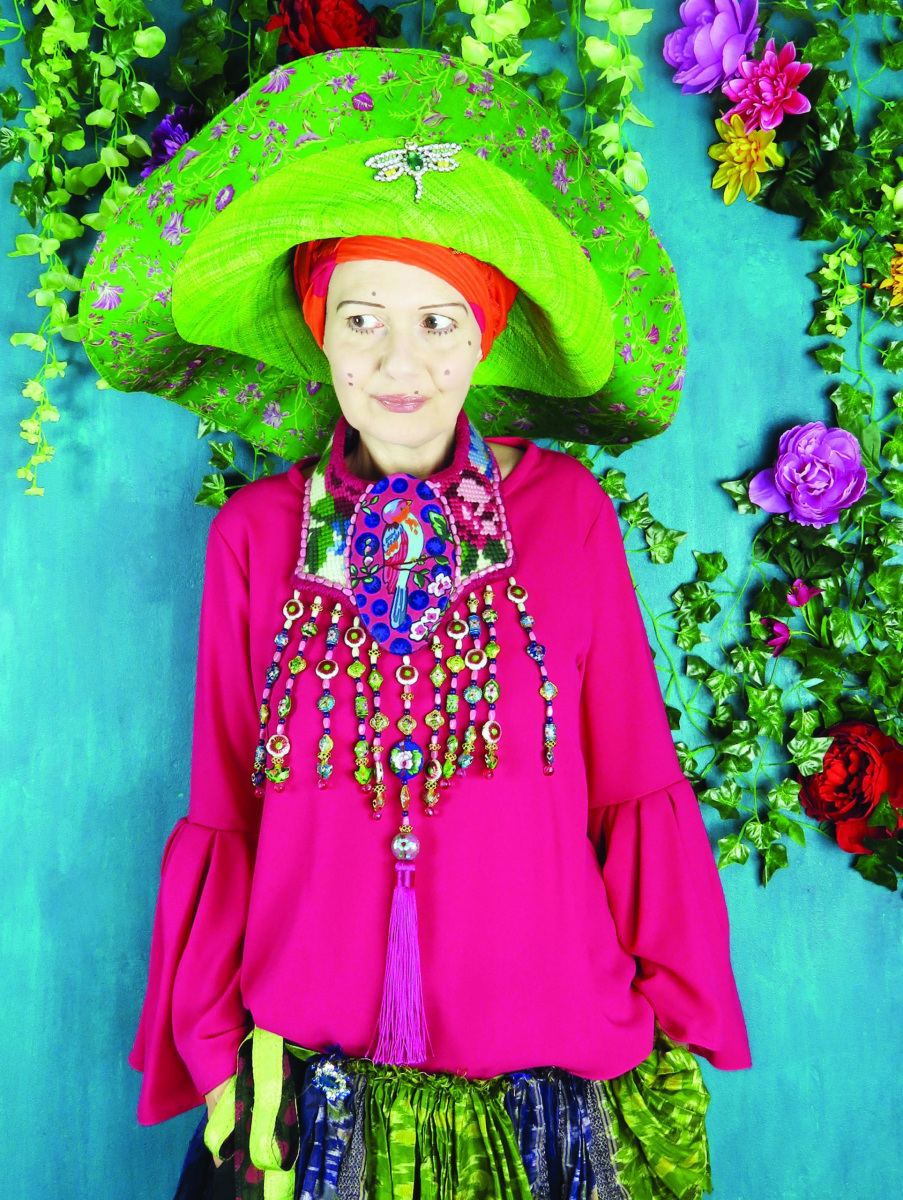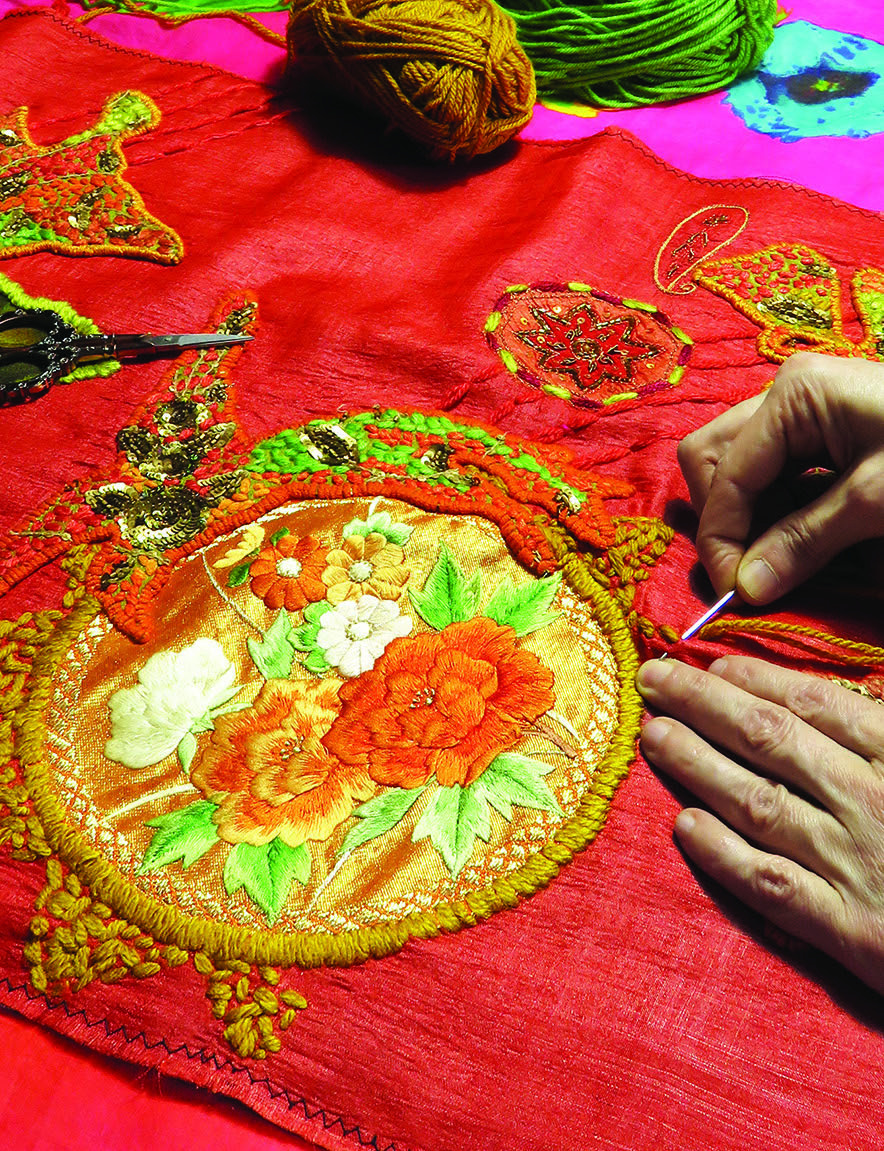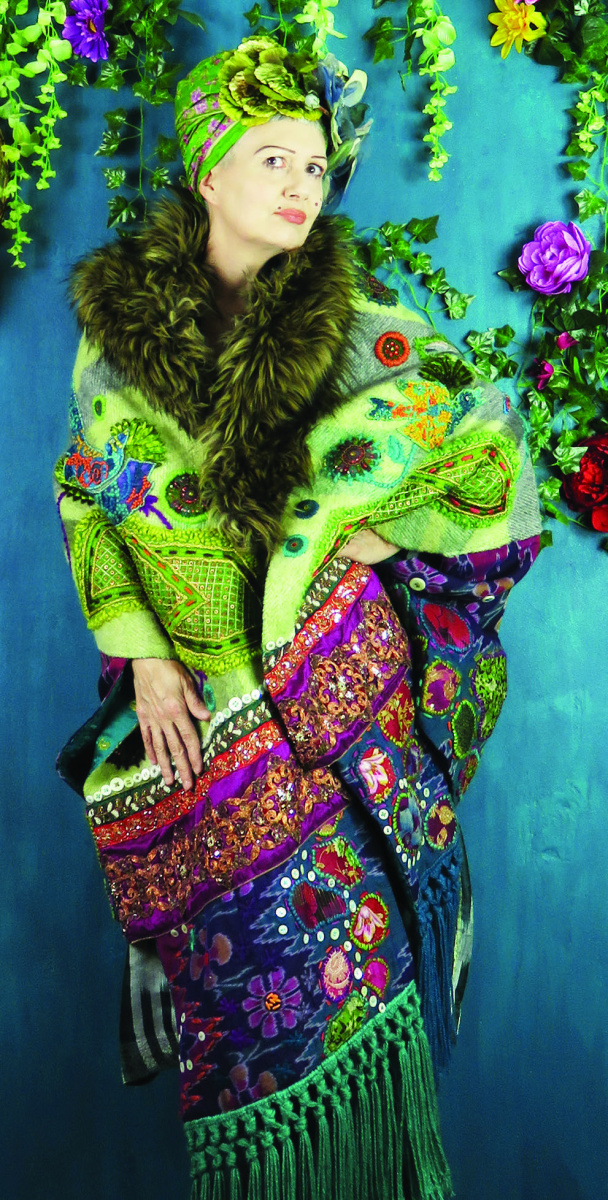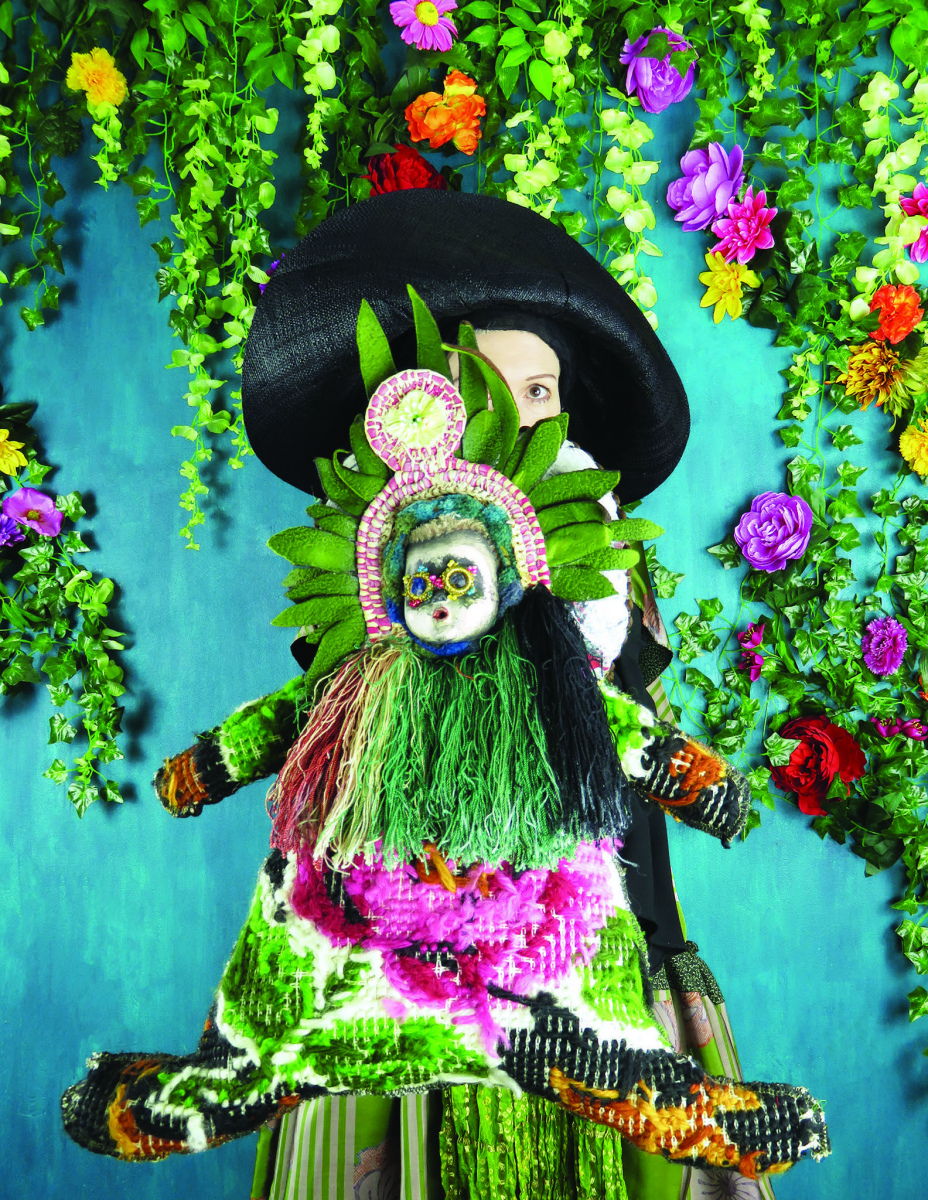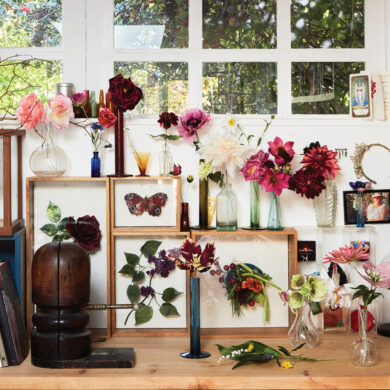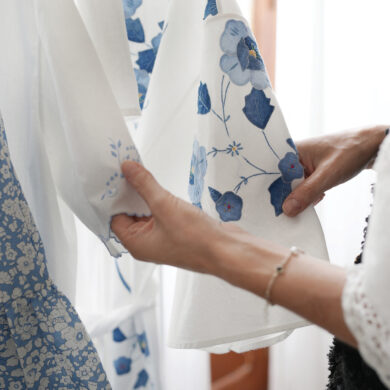I am a solitary and introverted person. Since I was a little girl, I’ve taken refuge in the creative world to escape reality. As far back as my memories go, I’ve been creating. As a child, I loved using my hands to make things; I liked tinkering, painting, and sewing. What I do now is a direct result of time spent with my grandmother, who is 96 years old. She was a masterful housewife and was always busy sewing, knitting, crocheting, and making tapestries and rugs. She is an inspiration. I loved watching her work and she had the gift of transmitting what she knew. I learned my first sewing stitches from her. When I was three years old she taught me to count, using very old buttons made of mother-of-pearl and white glass. When I use these sorts of buttons to decorate my creations, I’m reminded of the tender moments spent in her company. A few years ago, she gave me her box with the buttons of my childhood. They are precious to me.
More is more & less is a bore. — Iris Apfel
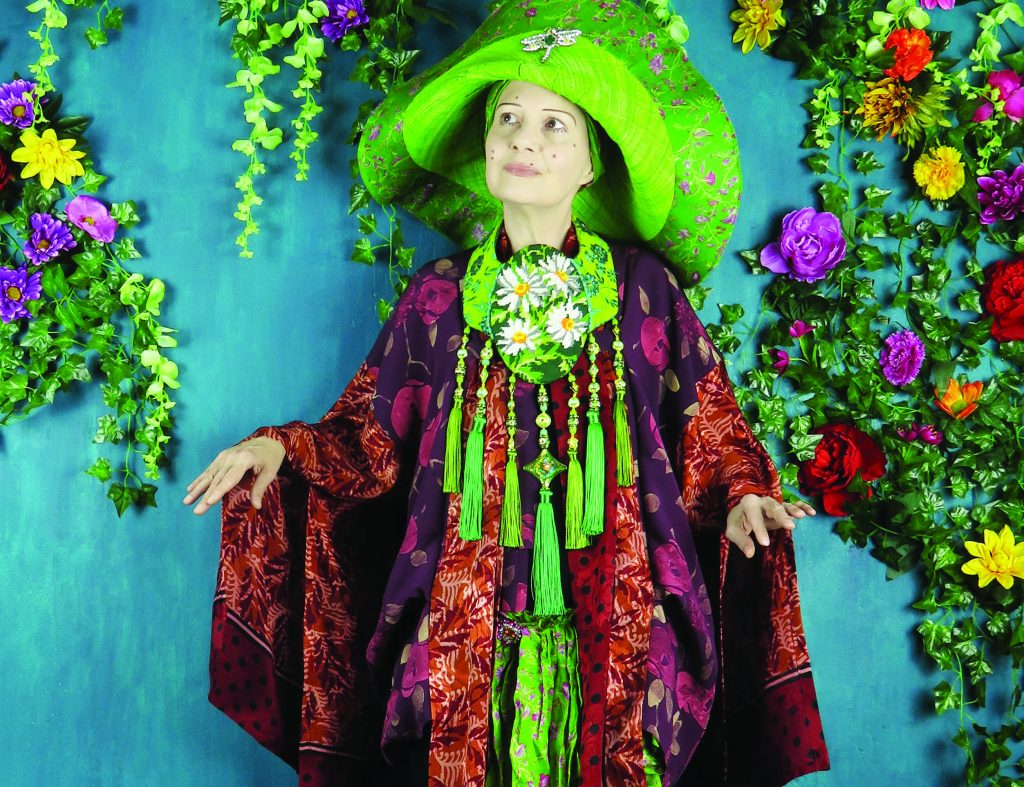
As soon as I learned to read, I became a voracious reader and was fascinated by the wealth to be found in books. I had beautiful big illustrated books filled with tales of the whole world; my imagination traveled and developed through my readings. When I stumbled onto Francis Scott Fitzgerald, I discovered the period of the 1920s and it was a revelation; I wanted to know more. Over the years I deepened my knowledge of this time period which fascinates me, and which revolutionized, among other things, women’s fashion forever.
In 1980, at the age of eleven, I leafed through my first fashion magazines. I thought the fashion was hideous, featuring models with blow-dried hair and exaggerated makeup, emphasized by vulgar poses and clothes. I was far from imagining that in 1983, discovering the Japanese designers Yohji Yamamoto and Rei Kawakubo/Comme des Garçons would lead me to experience such an aesthetic shock. I then decided to “do as they did,” and create clothes, so I began to sew my own clothes. To this day, creating through the medium of textiles is still part of who I am.
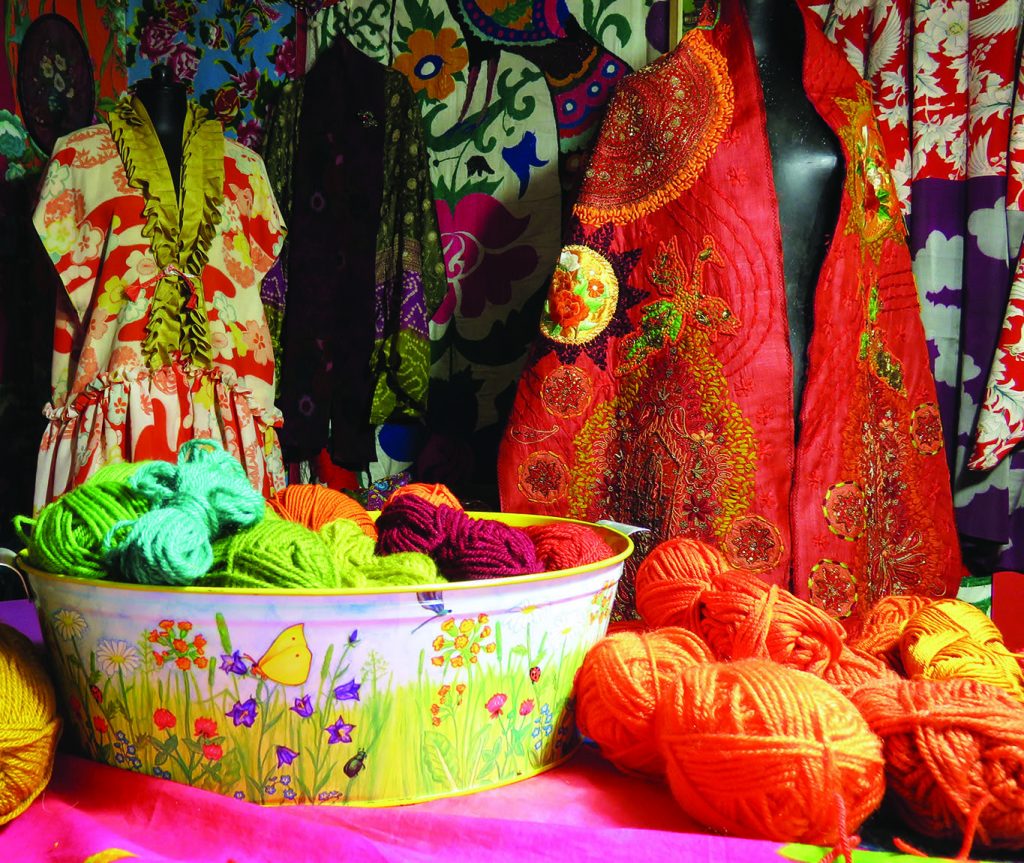
At sixteen years of age, I went to Paris to study and learned the techniques of haute couture. Various work experiences continued to forge a highly personal aesthetic and gave me a chance to try several techniques of expression. My fascination and passion for periods, styles, ethnic costumes, and embroideries were cultivated thanks also to beautiful books, which are still a perpetual source of inspiration.
Passion drives me
A “small” list of my most significant inspirations includes: the Parisian Belle Époque of 1900, the 1920s with their freedom and passion for life and decadence, the French Riviera in the 1930s, the elegant women photographed by the Brothers Seeberger and Jacques-Henri Lartigue, the dressmakers Paul Poiret, Madeleine Vionnet, and the Callot Sisters and Elsa Schiaparelli, who created the modern woman. Also the Russian Ballets, Nijinsky and Tamara Karsavina and fantastic set and costume designers such as Léon Bakst and Alexandre Benois. And from Asia, various costumes of the tribes of China, the delicacy of their silk embroidery; sublime Japan, its culture, its kimonos and other traditional clothes, which are pure refinement. The colors of India never cease to bring fire in my heart. The keystone of my work, embroidery, is truly globally inspired.
The apartment where I live and work is also a source of creative inspiration. It is my protective cocoon shielding me from the outside world, providing stimulating scenery for the spirit and the eyes. My place is coloured, cheerful, and filled with treasured objects and carefully curated old embroidered fabrics from various countries. It is also filled with flowering plants, because they give me the sense and feeling of living in a garden while in town.
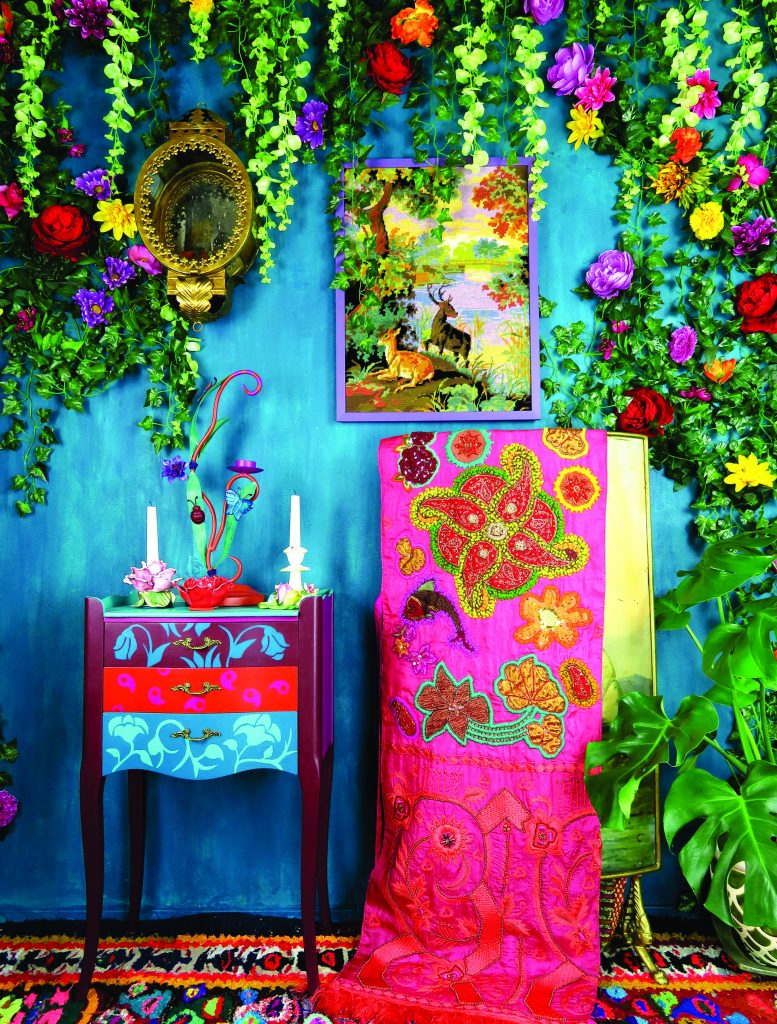
I work essentially with antique, vintage or secondhand materials that had another life before being in my hands. The world in which we live is in a cycle of overproducing clothes. Did you know that the textile industry is the second-worst polluter in the world? It is vital for the survival of our planet that we recycle and reuse what already exists. I can proudly say that over 80% of my creations are made with upcycled materials. Fabrics, garments, and vintage ethnic ornaments are all part of my creative materials. Some of my favourites come from India (from a company created by a woman, which is also something important for me), and others from Japan.
I also love working with kitschy tapestries, which can be easily found at the flea markets and charity stores. My favorite beads, which I have used abundantly for years, come from antique rosaries, in glass or wood, made in France in the 1930s, and of course from the old mother-of-pearl and white glass buttons of my childhood memories!
I create through touch & intuition
My process of shawl-making is simple, something that’s developed over the years. I marry upcycled fabrics to form a shawl base. As a painter would use his tubes of paint to create, I use my balls of colorful wools. I have approximately 170 different colors. I use them to create my style of “rustic” random embroidery, without any specific stitches or technique. I progress with touches of color, the brush replaced by a big needle, digging into my wools to mix them, as dry paints on a color palette. Accent beads are added where I feel they are needed. My shawls are my textile paintings, and they require at least sixty hours of dedicated handcrafting. My creations are born out of the union of all of these beautiful gathered materials.
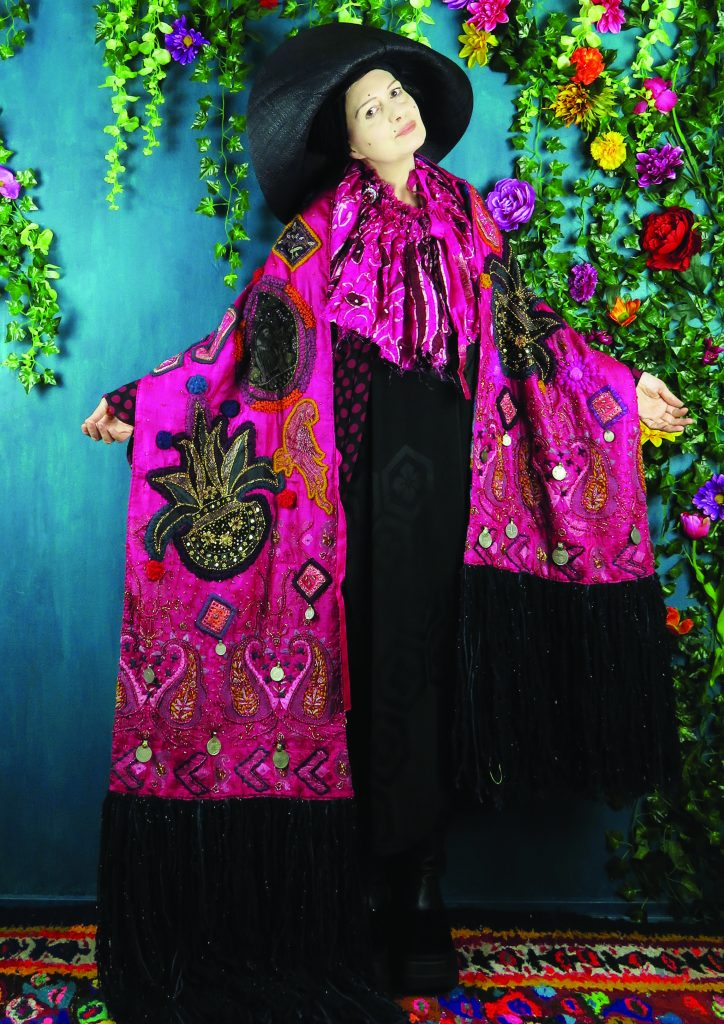
The last step in my creative process is to photograph my creations by staging them. I am both the photographer and the model. This act is the final step in my conception, a way to claim, for a few last moments, the object I created with such devoted passion. It prepares me to say goodbye to it before it begins its new life, bringing joy to another with colors and fantasy.
If I can give flight to dreams, poetry, and fantasies; if I can help those who gaze upon them, or wrap themselves in them, escape from their everyday life, even for just a moment, I will have fulfilled the destiny I believe was bestowed upon me as a young child.
I am a solitary and introverted person. Since I was a little girl, I’ve taken refuge in the creative world to escape reality. As far back as my memories go, I’ve been creating. As a child, I loved using my hands to make things; I liked tinkering, painting, and sewing. What I do now is a direct result of time spent with my grandmother, who is 96 years old. She was a masterful housewife and was always busy sewing, knitting, crocheting, and making tapestries and rugs. She is an inspiration. I loved watching her work and she had the gift of transmitting what she knew. I learned my first sewing stitches from her. When I was three years old she taught me to count, using very old buttons made of mother-of-pearl and white glass. When I use these sorts of buttons to decorate my creations, I’m reminded of the tender moments spent in her company. A few years ago, she gave me her box with the buttons of my childhood. They are precious to me.
More is more & less is a bore. — Iris Apfel

As soon as I learned to read, I became a voracious reader and was fascinated by the wealth to be found in books. I had beautiful big illustrated books filled with tales of the whole world; my imagination traveled and developed through my readings. When I stumbled onto Francis Scott Fitzgerald, I discovered the period of the 1920s and it was a revelation; I wanted to know more. Over the years I deepened my knowledge of this time period which fascinates me, and which revolutionized, among other things, women’s fashion forever.
In 1980, at the age of eleven, I leafed through my first fashion magazines. I thought the fashion was hideous, featuring models with blow-dried hair and exaggerated makeup, emphasized by vulgar poses and clothes. I was far from imagining that in 1983, discovering the Japanese designers Yohji Yamamoto and Rei Kawakubo/Comme des Garçons would lead me to experience such an aesthetic shock. I then decided to “do as they did,” and create clothes, so I began to sew my own clothes. To this day, creating through the medium of textiles is still part of who I am.

At sixteen years of age, I went to Paris to study and learned the techniques of haute couture. Various work experiences continued to forge a highly personal aesthetic and gave me a chance to try several techniques of expression. My fascination and passion for periods, styles, ethnic costumes, and embroideries were cultivated thanks also to beautiful books, which are still a perpetual source of inspiration.
Passion drives me
A “small” list of my most significant inspirations includes: the Parisian Belle Époque of 1900, the 1920s with their freedom and passion for life and decadence, the French Riviera in the 1930s, the elegant women photographed by the Brothers Seeberger and Jacques-Henri Lartigue, the dressmakers Paul Poiret, Madeleine Vionnet, and the Callot Sisters and Elsa Schiaparelli, who created the modern woman. Also the Russian Ballets, Nijinsky and Tamara Karsavina and fantastic set and costume designers such as Léon Bakst and Alexandre Benois. And from Asia, various costumes of the tribes of China, the delicacy of their silk embroidery; sublime Japan, its culture, its kimonos and other traditional clothes, which are pure refinement. The colors of India never cease to bring fire in my heart. The keystone of my work, embroidery, is truly globally inspired.
The apartment where I live and work is also a source of creative inspiration. It is my protective cocoon shielding me from the outside world, providing stimulating scenery for the spirit and the eyes. My place is coloured, cheerful, and filled with treasured objects and carefully curated old embroidered fabrics from various countries. It is also filled with flowering plants, because they give me the sense and feeling of living in a garden while in town.

I work essentially with antique, vintage or secondhand materials that had another life before being in my hands. The world in which we live is in a cycle of overproducing clothes. Did you know that the textile industry is the second-worst polluter in the world? It is vital for the survival of our planet that we recycle and reuse what already exists. I can proudly say that over 80% of my creations are made with upcycled materials. Fabrics, garments, and vintage ethnic ornaments are all part of my creative materials. Some of my favourites come from India (from a company created by a woman, which is also something important for me), and others from Japan.
I also love working with kitschy tapestries, which can be easily found at the flea markets and charity stores. My favorite beads, which I have used abundantly for years, come from antique rosaries, in glass or wood, made in France in the 1930s, and of course from the old mother-of-pearl and white glass buttons of my childhood memories!
I create through touch & intuition
My process of shawl-making is simple, something that’s developed over the years. I marry upcycled fabrics to form a shawl base. As a painter would use his tubes of paint to create, I use my balls of colorful wools. I have approximately 170 different colors. I use them to create my style of “rustic” random embroidery, without any specific stitches or technique. I progress with touches of color, the brush replaced by a big needle, digging into my wools to mix them, as dry paints on a color palette. Accent beads are added where I feel they are needed. My shawls are my textile paintings, and they require at least sixty hours of dedicated handcrafting. My creations are born out of the union of all of these beautiful gathered materials.

The last step in my creative process is to photograph my creations by staging them. I am both the photographer and the model. This act is the final step in my conception, a way to claim, for a few last moments, the object I created with such devoted passion. It prepares me to say goodbye to it before it begins its new life, bringing joy to another with colors and fantasy.
If I can give flight to dreams, poetry, and fantasies; if I can help those who gaze upon them, or wrap themselves in them, escape from their everyday life, even for just a moment, I will have fulfilled the destiny I believe was bestowed upon me as a young child.





